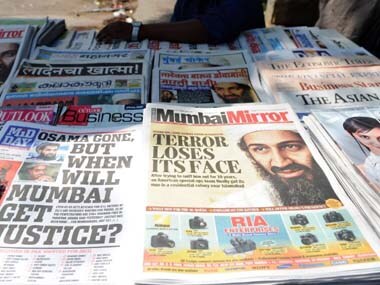A statement made at the International News Media Association’s (INMA’s) South Asia conference by Mayank Pareek, COO (Marketing & Sales) of Maruti Suzuki India, should ring alarm bells for print players. He said , “Within five years, we have cut down our print advertisement from 67 percent to 23 percent.”
Finally, someone in India is telling it like it is: print is in trouble. In July 2011, The Economist had written about a booming Indian market for newspapers, and Firstpost had argued that British magazine was wrong.
On the surface, print, at that time, seemed to be doing well. Overall circulation numbers were on the up-and advertising revenue seemed to be going up as well. A harder look at the data and an understanding of the unusual business model in India, where circulation revenue covers a fraction of the cost of paper and production and there is a disproportionate reliance on advertising revenue tells another tale.
[caption id=“attachment_414653” align=“alignleft” width=“380”]
 On the surface, print, at that time, seemed to be doing well. Overall circulation numbers were on the up-and advertising revenue seemed to be going up as well. AFP[/caption]
On the surface, print, at that time, seemed to be doing well. Overall circulation numbers were on the up-and advertising revenue seemed to be going up as well. AFP[/caption]
Advertising revenue data is available only the basis of the official rate card; discounts are not factored in. Newspaper circulation overall might be growing -because of the growth in the number of titles and editions, not in growth in the individual editions that yield high ad rates.
In June 2012, Firstpost had this to say about the continuing decline of print. “But the truly big story in the IRS is the state of the newspaper industry. While, overall,consumption of press has shown a 1.3 percent CAGR (see table), a look at the performance of the top 10 newspapers in the country will worry newspaper owners.”
Impact Shorts
More ShortsThis is what the readership numbers look like (AIR in table refers to average issue readership).

Overall, the top 10 newspapers in India have de-grown by 0.003 percent. Of the 10 publications, seven have registered negative growth, while those who have shown growth have done so in fractions of one percent.
A look at this morning’s newspapers makes the newspaper story even more frightening. The 24-page Times of India Crest Edition doesn’t carry a single paid advertisement. The 14-page Economic Times has no display ads; the only paid ads are tender notices and statutory financial ads. Mint does only slightly better. Their 44-page issue (including Lounge) has managed to attract just two paid display ads and a handful of statutory advertising releases. (Note: Saturday editions may not be the best way to judge ad revenues, but there are pointers, too).
These newspapers are from two of the most successful stables in the country_-The Times of India_ and _The Hindustan Times-_and they seemed to have the muscle and the machinery to fill pages with paid advertising. But Saturday’s papers underline that the Mayank Pareeks of the world, the marketers, have ended their love affair with newspapers.
Anant Rangaswami was, until recently, the editor of Campaign India magazine, of which Anant was also the founding editor. Campaign India is now arguably India's most respected publication in the advertising and media space. Anant has over 20 years experience in media and advertising. He began in Madras, for STAR TV, moving on as Regional Manager, South for Sony’s SET and finally as Chief Manager at BCCL’s Times Television and Times FM. He then moved to advertising, rising to the post of Associate Vice President at TBWA India. Anant then made the leap into journalism, taking over as editor of what is now Campaign India's competitive publication, Impact. Anant teaches regularly and is a prolific blogger and author of Watching from the sidelines.
)